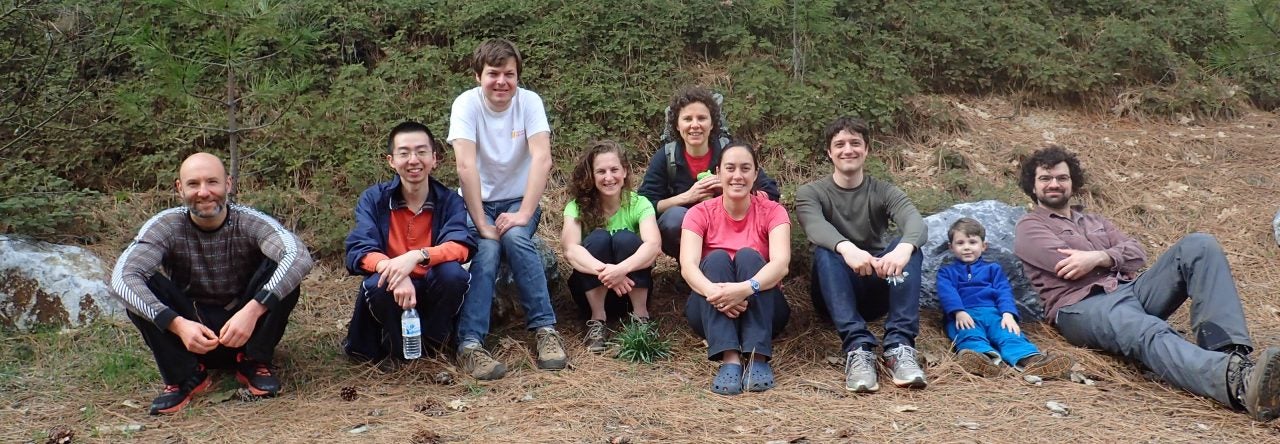For some reason, everyone really likes Dave’s work on hydras. Here are the recent articles:
Hydra “see” the light – but they don’t have eyes

For some reason, everyone really likes Dave’s work on hydras. Here are the recent articles:
Hydra “see” the light – but they don’t have eyes
A quick perspective in Nature Biotech: Three new high-throughput methods allow regulatory sequences to be analyzed at single-nucleotide resolution in living cells.
Here is a new paper from the Yamamoto lab looking at the function of fru in individual brain neurons. This is is clearest evidence to date that FruM controls sex-specific differentiation on individual neurons through a transcription-dependent mechanisms. Another interesting possibility emerging from this paper is that the male- and female-specific differentiation programs are “pre-wired” into the neurons, and that FruM is needed to flip the switch between these programs but not to specify either. This seems remarkably similar to the role of Dsx in the gonad and external genitalia. Check it out.
This year we will climb Mt Agassiz in Desolation Wilderness. With it overhanging, “diving board” summit hanging in the air over the heart of Desolation Valley, Agassiz has arguably the best views in the Tahoe Basin. Plus, it has an easy (if somewhat long) approach and is non-technical, i. e. can be climbed without any gear. Here is a picture of the summit:
http://www.summitpost.org/sunrise-on-agassiz-desolation-wilderness/737252/c-151128
And here is the view from the summit:
http://www.summitpost.org/lake-aloha-from-agassiz/23361/c-151128
Is it nice or what?
The approach from the trailhead to the base of the mountain is about 6 miles (one way) on a nice, well-maintained, not-steep trail. The trail ends at a tiny alpine lake above tree line – that will mean fewer mosquitoes. Those who decide not to climb the mountain can rest, picnic, and go for a swim there (the water will be ice-cold though).
With those who still have the energy and desire to climb, we will leave the trail and hike to the top of the ridge that connects Agassiz to Pyramid Peak, then walk this ridge to the top of Agassiz. This part of the hike is on broken rock and is steep but completely safe and non-technical. You may occasionally need your hands for balance, but there’s no climbing involved. We will eventually come to the summit block that looks like this:
http://www.summitpost.org/the-coolest-summit-in/56383/c-151128
http://www.summitpost.org/2007-9-8/508618/c-151128
Despite its forbiddng appearance, getting to the top requires nothing more than a straighforward scramble – you will definitely need your hands but there are no technical moves. Most people will find it easy, but I will bring a rope and other gear just in case and belay anyone who feels uncomfortable at any point.
The top is a completely flat slab of granite that can easily accommodate us all. We will take a well-deserved break, have lunch, do yoga, lean over edge to enjoy the exposure, etc. Then we will scramble down to pick up the folks who’ve been cooling their heels on the lake and follow the trail back to the car. It should not be hard to get back before dark.
More details to follow
It’s official – Dave rocks! He just got the university-wide award for excellence in postdoctoral research. It is awarded for, well, “outstanding achievements in the areas of teaching and academic research”. As fancy as they come.
In flies, sexually dimorphic behavior is coordinated in part by a dedicated neural circuitry established by Fruitless (Fru). A handful of receptors, such as GRs and ORs, have been shown to interact with specific pheromones and hydrocarbons and are essential for certain well-known behavioral repertoires in Drosophila. This paper shows that a pair of pickpocket (ppk) family sodium channels also play essential roles in promoting courtship behavior. Critically, its still not clear if this ion channel interacts directly with chemical cues from conspecifics, or if it plays a role in some other signal transduction pathway. It will be interesting to see what closely related paralogues of ppk might exist in drsosophilid taxa with distinct bristle morphologies, and or behavioral phenotypes.
Understanding how the genetic mechanisms that underlie sexually dimorphic traits evolve is a major focus of Kopp lab, but what are the macroevolutionary consequences of dimorphism? Theory suggests that dimorphic taxa ought to speciate more often than their monomorphic sisters, but this prediction has been difficult to test. Using comparative phylogenetic methods, this article finds support for an increased rate of speciation amongst dimorphic bird taxa. It is interesting to consider how macroevolutionary trends like species selection might be predicated on the activities of deeply conserved genetic modules like Dsx/Scr. Does anyone know if DMRT genes like Dsx are involved in specifying pigmentation pathways in verts?
This paper shows that the Scr protein binds DNA as a homodimer in at least some contexts. One interesting question is whether this prediction can be used to search for candidate Scr binding sites in enhancer sequences?
A quick overview in Nature Methods.
FYI for the students – here’s what Artyom will be teaching next year, see if anything looks potentially interesting.
Fall – BIS2A (Introductory Biology); this section will cover biochemistry, genetics, cell biology and development with some bits of evolution, ecology, and biogeochemistry mixed in. Graduate students interested in TAing for this class should contact the Microbiology office.
Fall – Genomics section of PBG 200A (Population Biology graduate core).
Winter – EVE150 (Evolution of Animal Development). This is a “play”, advanced class based mainly on the reading and discussions of original literature.
POSSIBLY – Insect transgenic technologies. This is an advanced undergraduate / graduate class I teach occasionally, whenever we accumulate enough interested people. If you would like to take this class, contact me. I will decide whether I’m teaching it by the end of Fall 2012 quarter.
Powered by WordPress & Theme by Anders Norén